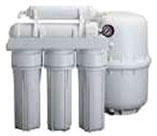Water with no filtration
Water Filtration Services
February 23 at 5:04 AM ·
Yucky well water winner today
No job too small. We always find a way to get it done
Before and after today
Before and after
Gary Willis Sr. the man, the myth, the legend and the master chef
Don’t know what we would do with out you!
Happy Birthday!!
Water Filtration Services
January 5, 2017 at 10:21 PM ·
Over 15 million U.S. households obtain their drinking water from private wells 1, which are not covered by the United States Environmental Protection Agency (EPA) regulations that protect public drinking water systems. Although the United States has one of the safest drinking water supplies in the world, sources of drinking water can still become contaminated through naturally occurring chemicals and minerals (for example, arsenic, radon), local land use practices (for example, pesticides, chemicals, animal feeding operations), malfunctioning wastewater treatment systems (for example, sewer overflows), and other sources. Contamination of a private well can impact not only the household served by the well, but also nearby households using the same aquifer.
Owners of private wells are responsible for ensuring that their water is safe from contaminants. Private wells should be checked every year for mechanical problems, cleanliness, and the presence of coliform bacteria, nitrates, and any other contaminants of local concern. A local health department or water well systems professional can help ensure delivery of high-quality water from an existing well or, if needed, help locate and construct a new well in a safer area.
Before and after
Over 15 million U.S. households obtain their drinking water from private wells 1, which are not covered by the United States Environmental Protection Agency (EPA) regulations that protect public drinking water systems. Although the United States has one of the safest drinking water supplies in the world, sources of drinking water can still become contaminated through naturally occurring chemicals and minerals (for example, arsenic, radon), local land use practices (for example, pesticides, chemicals, animal feeding operations), malfunctioning wastewater treatment systems (for example, sewer overflows), and other sources. Contamination of a private well can impact not only the household served by the well, but also nearby households using the same aquifer.
Owners of private wells are responsible for ensuring that their water is safe from contaminants. Private wells should be checked every year for mechanical problems, cleanliness, and the presence of coliform bacteria, nitrates, and any other contaminants of local concern. A local health department or water well systems professional can help ensure delivery of high-quality water from an existing well or, if needed, help locate and construct a new well in a safer area.
Before and after
Over 15 million U.S. households obtain their drinking water from private wells 1, which are not covered by the United States Environmental Protection Agency (EPA) regulations that protect public drinking water systems. Although the United States has one of the safest drinking water supplies in the world, sources of drinking water can still become contaminated through naturally occurring chemicals and minerals (for example, arsenic, radon), local land use practices (for example, pesticides, chemicals, animal feeding operations), malfunctioning wastewater treatment systems (for example, sewer overflows), and other sources. Contamination of a private well can impact not only the household served by the well, but also nearby households using the same aquifer.
Owners of private wells are responsible for ensuring that their water is safe from contaminants. Private wells should be checked every year for mechanical problems, cleanliness, and the presence of coliform bacteria, nitrates, and any other contaminants of local concern. A local health department or water well systems professional can help ensure delivery of high-quality water from an existing well or, if needed, help locate and construct a new well in a safer area.
Before and after
Over 15 million U.S. households obtain their drinking water from private wells 1, which are not covered by the United States Environmental Protection Agency (EPA) regulations that protect public drinking water systems. Although the United States has one of the safest drinking water supplies in the world, sources of drinking water can still become contaminated through naturally occurring chemicals and minerals (for example, arsenic, radon), local land use practices (for example, pesticides, chemicals, animal feeding operations), malfunctioning wastewater treatment systems (for example, sewer overflows), and other sources. Contamination of a private well can impact not only the household served by the well, but also nearby households using the same aquifer.
Owners of private wells are responsible for ensuring that their water is safe from contaminants. Private wells should be checked every year for mechanical problems, cleanliness, and the presence of coliform bacteria, nitrates, and any other contaminants of local concern. A local health department or water well systems professional can help ensure delivery of high-quality water from an existing well or, if needed, help locate and construct a new well in a safer area.








